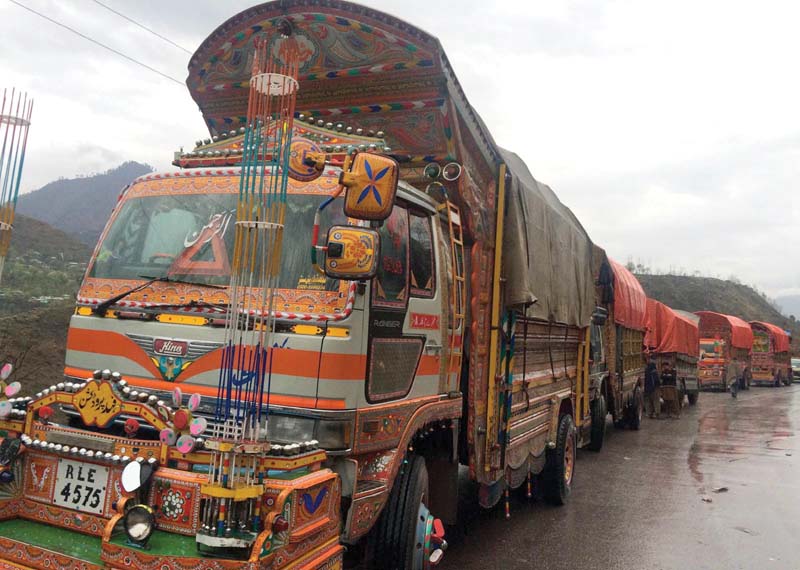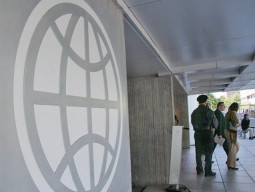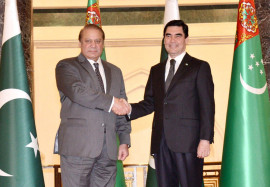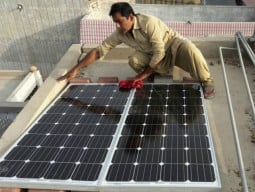
Pakistan and Bangladesh, among a few, have not yet become part of either of the two groups. The trade policy practitioners of Pakistan are confronted with questions, which are going to have significant repercussions on the national economy.
Pakistan’s trade gap broadens to $13.7b
Would Pakistan be better off staying out of both? And if not, which group should Pakistan join first?
The country cannot afford to make a wrong choice or choose not to act at all, as it is about future economic growth, job creation and capacity of national economy to service foreign currency debt that hangs in the balance.
Pakistan got a reasonable report card from IMF regarding future economic growth – with real GDP expected to grow at 4.5% in the fiscal year 2015/2016 - and macroeconomic stability.
To sustain economic growth, Pakistan needs to strengthen its economic linkages with the fast growing economies of Asia-Pacific region. Previously concluded FTAs of Pakistan barely benefitted the economy. Pakistan needs FTAs which cover the demand as well as the supply side of national economy. Moreover, an FTA should dismantle barriers to trade in goods, services, investment and intellectual property to facilitate the sourcing of inputs, services and investment from the fastest growing economies of Asia-Pacific region.
Once Pakistan becomes a part of either or both mega-regionals, it would be in a position to operate at the lower end of Global Value Chains (GVCs). As China is moving up the GVC, it is leaving the position open for countries like Pakistan and Vietnam to operate at the assembly/manufacturing stage. Availability of skilled, cheap and English speaking workforce would help Pakistan operate at the lower end of GVC.
Trade policy likely to meet the same fate as earlier ones
TTP or RCEP?
Pakistan is an important US ally in international war against terrorism, whereas China is an important development partner of Pakistan. If TPP is the US response to the growing economic influence of China in Asia-Pacific region, then Pakistan cannot afford to be the part of any geopolitical game that aims to contain the economic influence of China.
Despite its political disputes with some members of RCEP, China is still the major trading partner, if not the largest, of RCEP member countries. PRC also recognises the centrality of ASEAN in RCEP. Therefore, RCEP appears to be the more natural response to the growing economic interdependence in Asia-Pacific Region.
Putting aside geopolitical considerations, Pakistan cannot afford to join US-led TPP because its negotiating agenda is much broad and deep; the US-led TPP has been concluded as the high-quality high standard 21st century agreement. It has developed stronger market-based disciplines on state-owned enterprises, government procurement, investor-state dispute settlement mechanism, competition policy and use of industrial policies. It has narrowed down the regulatory divergence between the member countries of TPP.
Given the rich content of negotiating agenda of TPP, Pakistan cannot join TPP in the near future without the major economic restructuring of domestic economy.
Therefore, the obvious starting point for Pakistan should be to pace up unilateral product and factor market liberalisation. The product and factor market liberalisation calls for the proactive fiscal policy. Pakistan lacks deep fiscal buffer to smooth out the massive unemployment and income fluctuation across different sectors of economy.
All FTA partners—Australia, New Zealand, India, China, Japan and South Korea—of ASEAN are eligible to negotiate RCEP. This mega-regional is largely about liberalising trade in goods, services, investment and intellectual property rights.
As a share of total trade, Pakistan’s trade to RCEP member countries expanded rapidly from 2003 to 2012. Exports grew from 10.4% of total exports to 22% within the space of nearly ten years while the imports from RCEP member countries also witnessed the upward trend from 32.8% to 41.7% of the total imports during the same period.
Pakistan’s exports plunge to 4-year low
Out of 16 RCEP member countries, six of them falls in the list of top ten importing countries for Pakistan. Though the trade statistics suggest the mutual gains for Pakistan as well as RCEP member countries, Pakistan has to put sufficient on the negotiating table to generate strong interests across the ASEAN+6 countries; each one of them, in this case, is a veto stakeholder for the potential new member.
It is purely an empirical question as to how much trade and investment would be diverted away from Pakistan, should Pakistan choose to stay out of RCEP. Whatever is the magnitude of trade and investment diversion, joining RCEP would never be easy.
If Pakistan decides to join RCEP soon, before the consolidation of existing five ASEAN+1FTAs into RCEP, then it would have to negotiate and sign 10 bilateral FTAs concurrently. Only then would Pakistan become eligible for the RCEP membership.
If Pakistan decides to join later, after the consolidation of existing five ASEAN+1 FTAs into single region wide agreement then Pakistan would have to accede to RCEP on the terms and conditions outlined for new members.
RCEP is also likely to give comprehensive coverage to Foreign Direct Investment (FDI)—particularly to its liberalisation and protection. FDI regulatory regime of Pakistan is liberal though Pakistan had never signed the comprehensive FTA with WTO plus investment provisions.
Pakistan also effectively grants National Treatment status to foreign investors. There is no threshold for the foreign equity investment in any sector of domestic economy. However, banking, airlines, media and agriculture are subject to the upper limit on the share of foreign equity in these sectors. Pakistan allows the foreign investors to repatriate their funds, profits and dividends freely and has concluded Bilateral Investment Treaties with large number of countries.
Pakistan’s trade logistics need urgent overhaul
Conclusively, RCEP extends the great opportunity to Pakistan for strengthening and broadening its economic linkages. This is also in line with the broad market diversification strategy of Pakistan, which is targeted to reduce its export dependence on EU and USA.
Standing still is not an option for Pakistan. If Pakistan stays out of RCEP, then exporters would find it more difficult to sell their products to RCEP member countries. At the same time, Pakistan should continue to speed up unilateral product and factor market liberalisation for better integration into the global economy.
The writer is a civil servant and visiting faculty member at the Pakistan Institute of Development Economics
Published in The Express Tribune, March 21st, 2016.
Like Business on Facebook, follow @TribuneBiz on Twitter to stay informed and join in the conversation.

















1713904359-0/burn-(1)1713904359-0-270x192.webp)

























COMMENTS (5)
Comments are moderated and generally will be posted if they are on-topic and not abusive.
For more information, please see our Comments FAQ